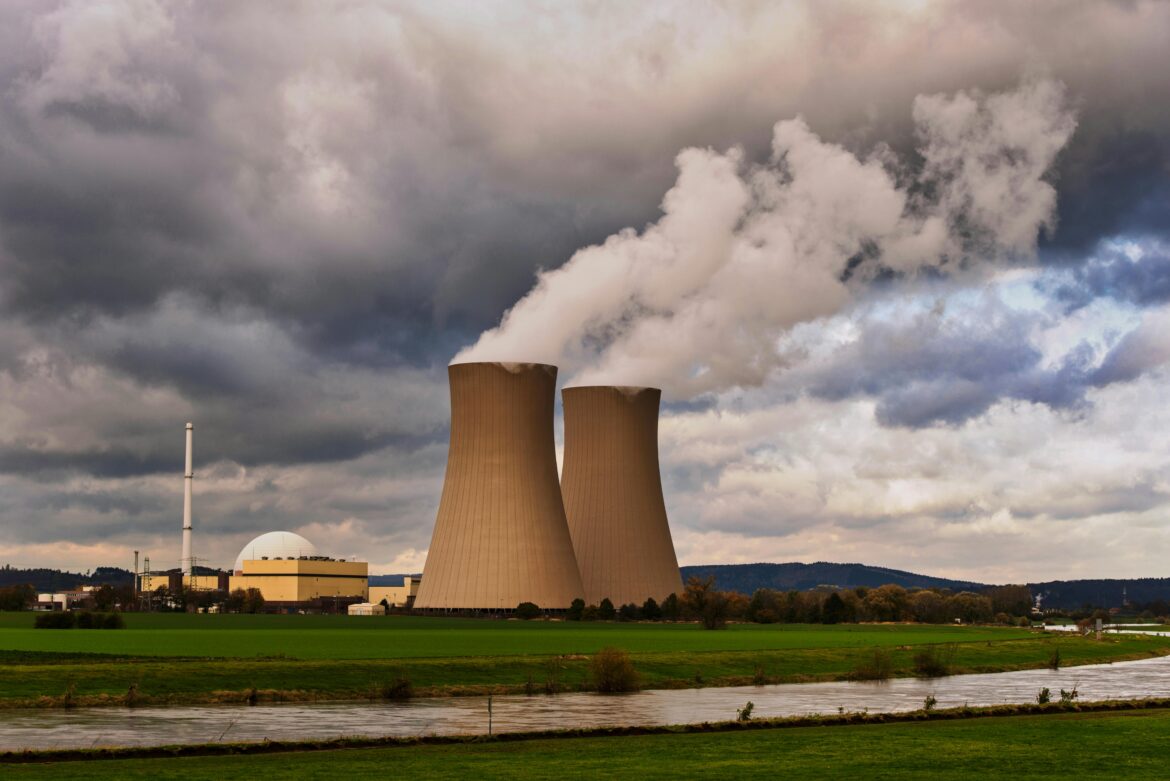In a major step toward reshaping global energy alliances, the UK and the US have formalised a cooperative agreement to accelerate the development and deployment of Small Modular Reactors (SMRs)—a new generation of compact nuclear technology.
Announced on July 28, 2025, during a high-profile summit in Scotland, the move comes with strong backing from Prime Minister Keir Starmer and former U.S. President Donald Trump, signalling a transatlantic push to modernise nuclear energy infrastructure, cut carbon emissions, and create high-skill jobs in both nations.
But is this the boost Britain’s nuclear sector desperately needed—or another political promise that might fall short of its potential?
What Are Small Modular Reactors (SMRs)?
SMRs are next-generation nuclear reactors designed to be smaller, cheaper, and faster to build than conventional nuclear power stations. Unlike traditional plants, which require massive upfront investment and construction time, SMRs are factory-assembled and modular, allowing for scalable deployment.
Key features of SMRs include:
- Output: Typically 50–300 megawatts per unit (vs. ~1,000 MW for traditional reactors)
- Deployment: Built off-site, transported, and assembled at the energy destination
- Flexibility: Suitable for remote locations, industrial use, or supplementing national grids
- Safety: Passive safety features reduce risk of meltdown
The UK sees SMRs as essential to its Net Zero 2050 strategy, and its aim to phase out fossil fuels without jeopardising grid stability.
The UK’s £2.5 Billion SMR Investment
The UK government has already pledged £2.5 billion in public funding for SMR development, with the bulk directed to Rolls-Royce SMR Ltd, a subsidiary of aerospace giant Rolls-Royce. This includes:
- £200 million for early-stage design and regulatory work
- £1.3 billion earmarked for site development, testing, and grid integration
- £1 billion leveraged from private co-investors including BNF Resources, Qatar Investment Authority, and U.S.-based Exelon Generation
The flagship plan aims to deploy at least three SMRs in the UK by 2035, starting with the Trawsfynydd site in North Wales, a former nuclear location ideal for grid reintegration.
What Was Announced at the Scotland Summit?
At the 2025 UK–US Energy Innovation Summit, both Keir Starmer and Donald Trump made a joint statement outlining:
- Formal R&D cooperation between UK and U.S. nuclear regulatory bodies
- A $2 billion joint investment pool for dual-market SMR projects
- U.S. technical support for Rolls-Royce’s planned SMRs in UK and EU sites
- Commitment to develop transatlantic SMR export hubs, potentially using ports in Teesside and Norfolk
Trump, speaking from Edinburgh, declared:
“Small modular reactors are the future. They’re safe, efficient, and they’ll create jobs on both sides of the Atlantic. I strongly support what the UK is doing here.”
Starmer described the agreement as a “defining moment for Britain’s energy independence and green leadership.”
Strategic & Economic Implications for the UK
The partnership is widely seen as a strategic move to:
- Reduce dependence on fossil fuels and foreign gas
- Revive UK manufacturing and energy innovation sectors
- Export British-designed SMRs globally, especially to Commonwealth nations and EU allies
- Counter Chinese and Russian dominance in global nuclear development
It is expected that the agreement will create up to 40,000 jobs by 2040, particularly in regions targeted by the government’s “Levelling Up” agenda.
Additionally, it aligns with the UK’s Great British Energy Act 2025, which established a new state-backed entity to invest in clean energy infrastructure—part of Labour’s broader industrial strategy.
What Makes Rolls-Royce SMRs Unique?
Rolls-Royce’s design is based on decades of experience in building nuclear propulsion systems for submarines. Key features include:
- 470 MW output per reactor, enough to power ~1 million homes
- Estimated £2 billion cost per unit, far lower than £20–25 billion for large-scale nuclear sites like Hinkley Point C
- Deployment timeline of 4–6 years, compared to 10–15 years for traditional plants
- Designed with passive safety systems and modular upgrades
If successful, Rolls-Royce SMRs could become Britain’s leading energy export, rivalling France’s EDF and China’s Hualong One reactors.
Market Reactions and Investment Trends
Following the announcement:
- Rolls-Royce Holdings’ stock rose by 3.4% on the FTSE 100, hitting a 12-month high
- Institutional interest increased in clean energy ETFs with SMR exposure
- Analysts at Goldman Sachs and JP Morgan upgraded Rolls-Royce’s outlook to “Buy”
Private investors are eyeing opportunities in SMR-linked infrastructure, AI grid management, uranium mining, and green hydrogen co-generation, all potentially driven by SMR integration.
Concerns and Challenges Ahead
Despite the hype, challenges remain:
- Regulatory barriers: SMRs still require full UK Office for Nuclear Regulation (ONR) approval. This could take 2–3 years.
- NIMBY resistance: Proposed SMR sites face pushback from local communities.
- Cost overrun risks: Previous large-scale nuclear projects have been plagued by spiralling costs and delays.
- Waste and security: Nuclear waste disposal and terrorism risks remain unresolved.
Furthermore, green groups like Greenpeace and Friends of the Earth argue SMRs distract from proven renewable technologies like wind, solar, and battery storage.
International Competition Heats Up
The UK is not alone. As of 2025, over a dozen SMR designs are in the race:
- U.S.: NuScale, X-Energy
- China: CNNC Linglong One
- Russia: Akademik Lomonosov (floating SMRs)
- Canada: Terrestrial Energy, GE Hitachi
- France: EDF Nuward project
Securing first-mover advantage in regulatory approval, manufacturing scale, and international licensing could make or break Britain’s SMR ambitions.
Final Thoughts
The UK–US small modular reactor pact marks a pivotal moment in global energy policy, putting the UK at the forefront of a high-stakes race to redefine nuclear energy for the 21st century.
If executed well, this could not only help Britain achieve Net Zero but also rebuild its industrial base, boost exports, and establish energy independence in an increasingly volatile world.
But execution, not excitement, will determine whether Rolls-Royce SMRs become Britain’s next great energy success story—or just another stalled innovation.
FAQs
What is a small modular reactor (SMR)?
A compact, factory-built nuclear reactor designed for fast, scalable deployment with lower upfront cost and improved safety.
Why is the UK investing in SMRs?
To meet Net Zero targets, reduce reliance on fossil fuels, and boost domestic energy innovation and exports.
How much has the UK government committed to SMRs?
£2.5 billion, mostly through the Rolls-Royce SMR initiative.
When will the first UK SMR be operational?
If regulatory approvals proceed as planned, the first could go live by 2032–2035.
What are the investment opportunities related to SMRs?
Rolls-Royce shares, SMR-linked ETFs, clean energy infrastructure funds, and uranium mining equities.
Resources & References
- Reuters – UK-US SMR Pact
- Standard – UK’s Energy Innovation
- Rolls-Royce SMR Official Site
- World Nuclear Association – SMRs Overview
- UK Government – Net Zero Strategy
Disclaimer
This article is based on official statements, financial data, and verified reports. It does not constitute investment advice. Please consult a qualified financial adviser before making any investment decisions related to nuclear energy or clean tech stocks.
SEO Meta Info
SEO Title: UK–US Nuclear Pact Powers SMR Investment Surge
Slug: uk-us-smr-rolls-royce-investment-2025
Meta Description: The UK and US launch SMR partnership to fund Rolls-Royce nuclear tech and boost clean energy jobs.


